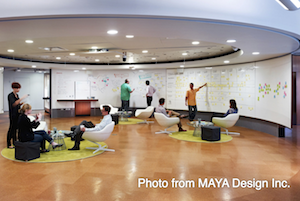How the Nail that Sticks Up Gets Hammered Down
 Some of you may have heard the old Japanese proverb “The nail which sticks up is hammered down.” Guides to doing business in Japan often illustrate this proverb using dress code (e.g., don’t wear flashy clothes to business meetings), but its meaning is much deeper than this.
Some of you may have heard the old Japanese proverb “The nail which sticks up is hammered down.” Guides to doing business in Japan often illustrate this proverb using dress code (e.g., don’t wear flashy clothes to business meetings), but its meaning is much deeper than this.A few years back, I helped organize a large conference in Tokyo, for which the goal was to have the young generation become more interested in politics. The speakers were top notch: CEO’s from established firms, a well-known TV news anchor, a journalist, a member of the National Diet, and a sociology professor from a prominent university. We invited young entrepreneurs and businesspeople on stage to discuss why young people aren’t voting and what we can do about it. Hundreds of college students came to watch this event. Then it happened…
Jan 21 2015,
0 comments

 Archives for January 2015
Archives for January 2015 Group ideation processes, when well designed and well facilitated, are capable of generating a host of highly attractive creative options, and occasionally truly breakthrough solutions, to virtually any business challenge.
Group ideation processes, when well designed and well facilitated, are capable of generating a host of highly attractive creative options, and occasionally truly breakthrough solutions, to virtually any business challenge.
 Have you ever collaborated with a creative person who is overseas, say a web designer in India, and the whole experience turned out to be a nightmare?
Have you ever collaborated with a creative person who is overseas, say a web designer in India, and the whole experience turned out to be a nightmare?